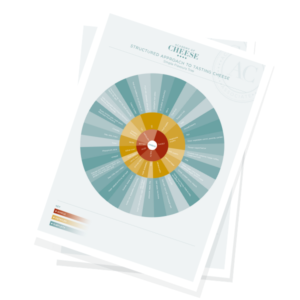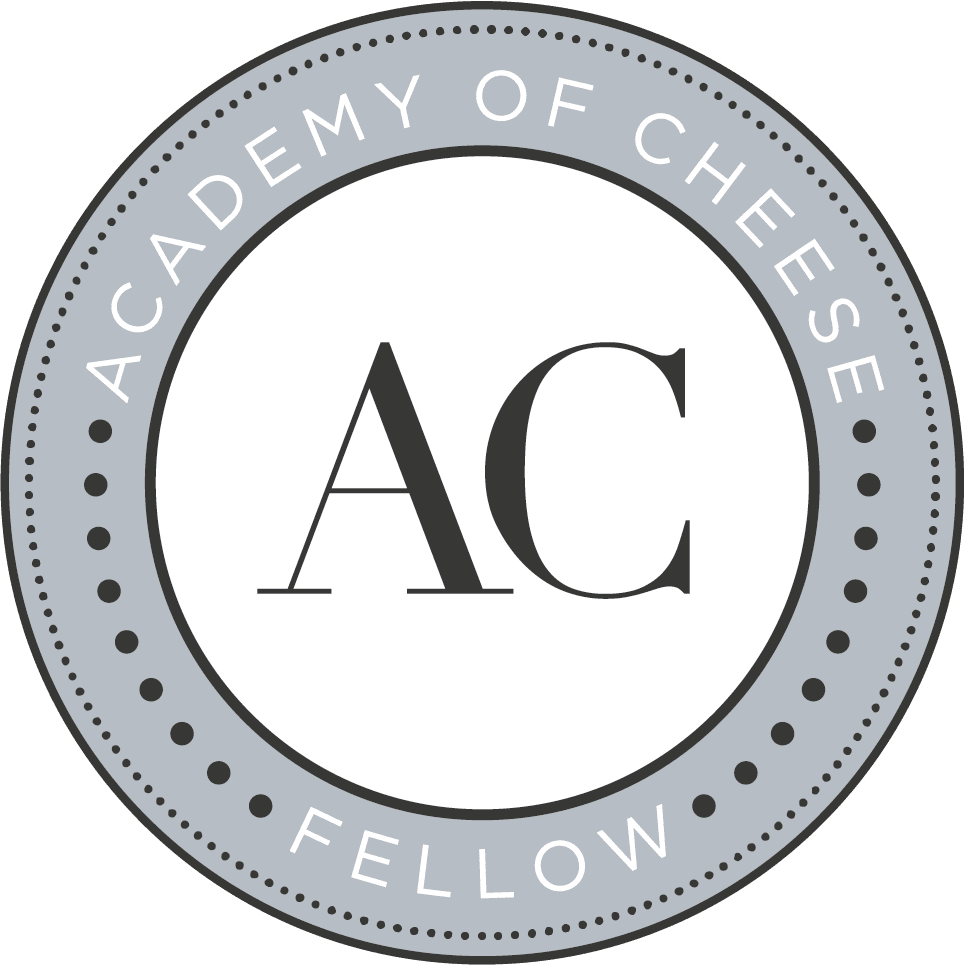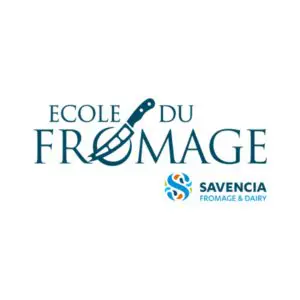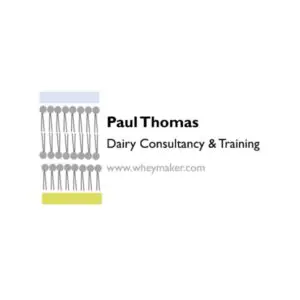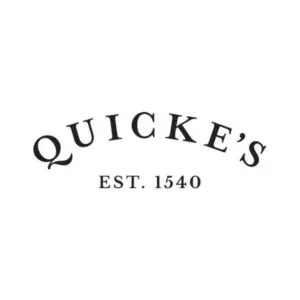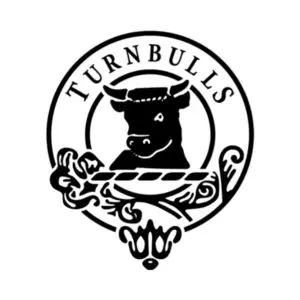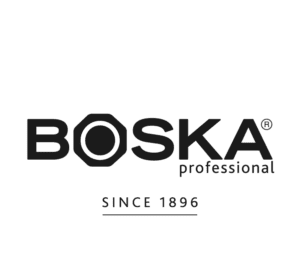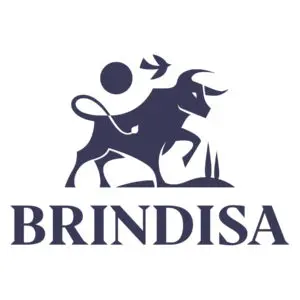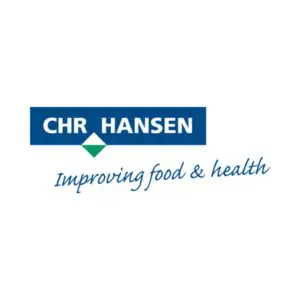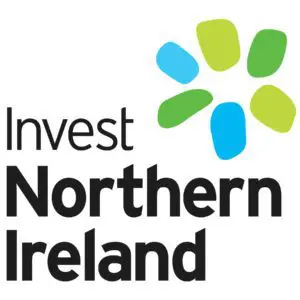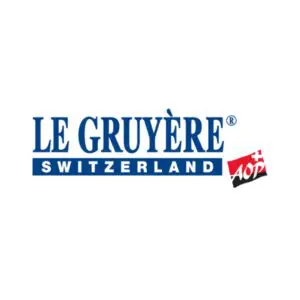Milk Production & Cheesemaking
The science of Cheese making, everything from milking to maturing. We’ve gathered all the information here.

101 guide – Milk Production & Cheesemaking | Chapter one
How to Make Cheese (The Milk to Cheese Process)
The first Cheese making ingredient
There are thousands upon thousandes of cheeses made across the world, of which the primary ingredient is milk. But how does this unassuming white liquid turn into a solid, flavour-packed delight such as a punchy clothbound cheddar, an unctuous oozing Brie de Meaux, or a rich spidery-veined Blue Stilton? And how do we get so many delicious varieties if the primary ingredient is basically the same?
Let’s start at the beginning and see how cheese was “discovered” in the first place.
Making cheese came about, essentially, as a method of preserving milk. The first “Cheesemaking” could be described as milk acidified and coagulated into curds and whey, and the whey drained away leaving solid curd or cheese.
Many traditional agricultural methods came originally from the middle east, specifically the fertile crescent: the upside-down horseshoe that is Palestine and Israel, up through Syria and southern Turkey, across into Persia and down along the Tigris and Euphrates of today’s Iraq. Humans domesticated the first sheep there, around 11,000 to 13,000 years ago. They would have drunk their milk and observed it coagulate pretty much at the same time. Cows were domesticated 10,500 years ago, with goats not much later.
The earliest archaeological evidence of cheesemaking, however, is in Poland 8,000 years ago and in Switzerland. It is highly likely that the inhabitants of the fertile crescent made cheese first, as the domestication of animals occurred earlier here than in other parts of the world, but there is no evidence to prove it.
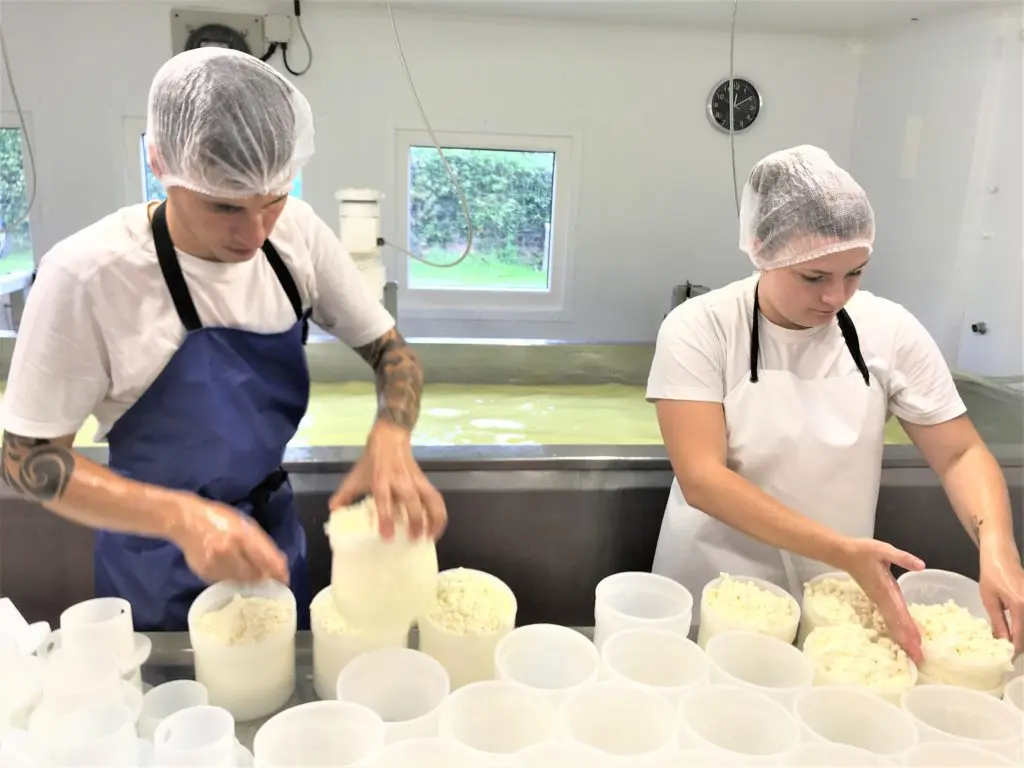
What exactly is Milk?
A highly nutritious liquid, milk is formed in the mammary glands of mammals, produced to sustain their new-borns during the first months of their lives. As such, it is the most basic and yet most complete food available to humans.
The common species of milking animal used for cheesemaking include:
- Cows
- Goats
- Ewes (sheep)
- Buffalo
Other milks you might come across are from camels, horses and yaks. All mammals’ produce milk, but not all species are practical from the point of view of volume, composition, coagulation properties or even ease of milking (how do you go about milking a whale?).
Milk production, by necessity, requires the milking animal to produce offspring. This involves a managed cycle of breeding, calving (or kidding/lambing), lactation and drying-off. Milk yield will peak in early lactation and the drying-off period allows the milking animal to recover ahead of the following lactation.
Most animals are milked twice a day. Hand-milking is still carried out in some parts of the world but the use of a milking machine is more common, and robotic milking parlours are also becoming more common. Legislation applied in different countries determines if the milk can be used warm immediately after milking, or if it must be chilled or subsequently heat-treated (e.g., by pasteurisation).

Composition of milk
When making cheese, it is important to understand the composition of the milk, as this will help determine a number of factors, including how well the whey will drain off and the resulting flavours and texture of the finished cheese.
Milk is mostly composed of water. The non-water components are called ‘solids’ and these include:
- Fat – also called butterfat
- Protein – approximately 80% of the milk proteins are a type called caseins, the rest are whey proteins.
- Minerals – calcium, but also phosphorous, magnesium, potassium and zinc
- Carbohydrate – mostly a milk sugar, called lactose
- Vitamins – Vitamins A, B6, B12, C, D, K, E
The actual composition for milk, however, can vary by day, season, breed and species. Which is why cheese texture and flavour is so variable and unique to whether the milk is from a single milking, or taken from two different days, as well as the pastures that the animals graze on (known as terroir), or the feeds used on the farm.
What is Cheesemaking?
The primary objective of cheesemaking is to remove most of the water from the milk, and then acidify the remaining curds to ultimately preserve the solid mass. The amount of liquid removed depends upon the style of cheese being made and how long it is to be kept for.
This all sounds very functional, as it would have been necessary thousands of years ago. Today, however, we have refrigerators, so cheesemaking has become more about the hedonistic pleasure of eating, as opposed to its nutritional requirement.
How is Cheese Made?
The main ingredients in cheese are milk, starter cultures, rennet and salt. But how do these all combine to make cheese? The “magic” ingredient is a protein in milk called casein. Caseins are proteins that gel together during coagulation, creating a sponge like structure of curds. Milk can be coagulated by acidification or enzymatically using rennet.
Fat and moisture become entrapped in this gel and it is the breakdown of fat, as the cheese matures, that will help influence flavour and aroma. The fat composition can vary by species, breed and feed. For example, Holstein Friesian cows produce milk with around 4% butterfat, whilst the Channel Island breeds have 6-8% butterfat.
The first step in modern cheesemaking is to separate the curd from the whey by adding the first two ingredients: starter cultures and rennet.
What are starters cultures?
Most cheeses rely on the action of lactic acid bacteria (LAB) to acidify the milk by converting lactose into lactic acid. Historically, these lactic acids would have been naturally present in the raw milk and would have grown spontaneously in the curd during cheesemaking. Today it is more common for the cheesemaker to add commercially purchased starters to achieve better control of the process.
The starter bacteria ferment the lactose and produce, amongst other things, lactic acid. In doing so they influence flavour and texture. They also provide microbial competition to inhibit the growth of less desirable bacteria.
What is Rennet?
Acidification of the curd can take a long period of time, often up to 24 hours, for the starters to produce the necessary level of acidity. These ‘lactic cheeses’, are probably the oldest form of cheese, but due to the length of time these lactic cheeses take to make, most of the varieties that we know today are helped along with the use of rennet.
Rennet is an enzyme that can speed up the formation of the curd, traditionally produced within the abomasum, the fourth stomach compartment of a calf, kid or lamb. There are manufactured rennet alternatives, which are suitable for vegetarians; theses are usually produced from species of mould, yeast, bacteria and some plants.
After the curd has formed, a cheese can take many paths – it can be flavoured, physically manipulated, drained in moulds or have its rind washed.
Cutting the Curd
Once the curd is set it is cut into small pieces to allow the whey, which is mainly water, to be released from the solid curd; this is done using knives, wires, or by ladling. The smaller cut the pieces, the more whey is released, the drier the curd, and the harder the final cheese.
It is important that the cheesemaker cuts the curd to the right size and at the correct time for the cheese variety being produced.
Cooking the Curd
To get a crumbly, hard or hard-cooked cheese, the curds need to be heated within the whey in the vat; this is called scalding. After cutting, this process is the next most important process which impacts how long the cheese is matured for. The temperatures at which the curds are scalded depends upon the cheese being made but vary from between 35oC for crumbly cheeses up to around 50oC for hard-cooked cheeses, such as Parmigiano Reggiano.
Draining and Moulding
Soft cheeses may be moulded or drained through cloth, whilst for hard cheeses such as cheddar, the curd is formed into blocks and stacked until the correct acidity is achieved. They are then broken up, or milled, before the salt is added, then placed in moulds and pressed. Whilst other hard cheeses, such as Gouda, the curds are pressed in the moulds, either by applying weights, or placing them on a cheese press.
The Purpose of Salt
The last of the ingredients to be added, salt is essential for most cheeses. As well as imparting a salty flavour, it also acts as a preservative, making moisture in the cheese inaccessible to microorganisms, including undesirable bacteria.
The salt can be added directly to the surface of the cheese after moulding and draining; into the curds before moulding, or by brining in a salt solution.
How Long Does it Take to Mature A Cheese?
Some cheeses are sold unripened or fresh, like Mozzarella di Bufala PDO, whilst others must be matured to develop the correct flavour and texture. There are basic parameters, such as humidity, temperature and time, that will have an impact on moisture levels. And then there are other tweaking processes, such as brushing the cheese, or oiling it to help influence the development of microflora.
As a rule-of-thumb, the less moisture in the cheese, the longer it takes to mature.
- Soft cheeses are rarely aged for more than a couple of months.
- Crumbly makes, such as Clothbound Cheshire can be matured between 6 weeks to 6 months.
- Hard cheeses, such as Manchego PDO, typically take between 2 and 18 months
- Hard-cooked cheeses, such as Grana Padano can age for up to 36 months.
Cultures used to ripen the cheese
Unlike starter cultures, which are used at the beginning of the cheesemaking process, ripening cultures are sometimes added during the ripening of the cheeses, to add flavour and texture. These include:
Penicillium roqueforti: the mould responsible for the ‘blueing’ in blue cheeses such as Roquefort, Stilton and Gorgonzola.
Penicillium candidum / P. camemberti: The white mould responsible for ripening externally mould-ripened cheeses such as brie and camembert.
Geotrichum candidum: a yeast commonly associated with the wrinkly, ‘brain-like’ vermiculation on the surface of yeast and mould-ripened goat cheeses, such as Driftwood and St Marcellin.
Brevibacterium linens: often associated with the sticky pink or orange surface of washed rind cheeses such as Epoisses and Taleggio
Propionibacterium freudenreichii subsp. Shermani: this gas-producing bacteria is associated with the formation of large spherical ‘eyes’ during the ripening of cheeses like Emmentaler.
101 guide – Milk Production & Cheesemaking | Chapter two
The Cheese Production Process and the Cheese Industry?
The Cheesemaker and Affineur’s Role
A professional cheesemaker will know their cardoon from their calf-rennet, but who’s to say there isn’t another version of their long-established cheese just waiting to be discovered? A little tweak of starter, a slightly bigger cut, or a different way of brining may just create that next best-seller! And when every penny counts in business, it is vital to understand the economics of yield and maximising resources for cost-effective processes.

What does Milk Production and Cheesemaking mean to Cheese Retailers?
Knowing the provenance of a cheese is fundamental to a specialist retailer and their team. The ability to talk about where a cheese has come from and how it was made gives a competitive advantage over supermarket cheese chillers, where there is no-one around to ask and customers must rely upon the packaging for any information on source. It is this knowledge and conversation that will get customers coming back for more.
What Chefs and Sommeliers Need to Know About Cheesemaking
Familiarising yourself with the properties of a cheese will help with the creation of that perfect cheese dish. How? You need a good melting cheese? You need one with high moisture. Need something with sweeter notes? Perhaps a sheep’s milk cheese would be more suitable. Catering for vegetarians? Better make sure the rennet isn’t from an animal-source. These little nuggets of knowledge will help your dialogue with the wholesaler, answer important queries from diners and ultimately lead to happy guests.
101 guide – Milk Production & Cheesemaking | Chapter three
What does Cheesemaking mean to Consumers?
Cheese Provenance
Provenance is the term we use to describe the origins of a cheese, including, but not limited to, the cheesemaker that created it, the pastures that were grazed upon and the history and culture that contributed towards its creation. Succinctly put, it provides us with an understanding of how our cheese has been made. It is this understanding that gives individuals a greater appreciation of the cheeses they know and love so much. It also provides confidence in knowing that what they have paid is representative and good value for the time, effort and time-honoured expertise that go into making quality cheese.
101 guide – Milk Production & Cheesemaking | Chapter four
What is the relationship between the Academy of Cheese and Cheesemaking?
Make Post Make (MPM) Model
Milk production and cheesemaking is at the heart of everything we do. Without either, there would be no cheese and, ergo, no Academy of Cheese.
To categorise cheese by the methods in which they are made, the Academy of Cheese has designed an industry-recognised tool, known as the Make Post Make (MPM) Model. This is a unique system for categorising cheeses and is at the heart of all the levels in our programme of learning. The Model splits cheese production into two steps: the Make, which groups cheeses according to similarities in production, texture, water content and maturation period, and Post-Make, which describes any process that takes place after the curd has formed.
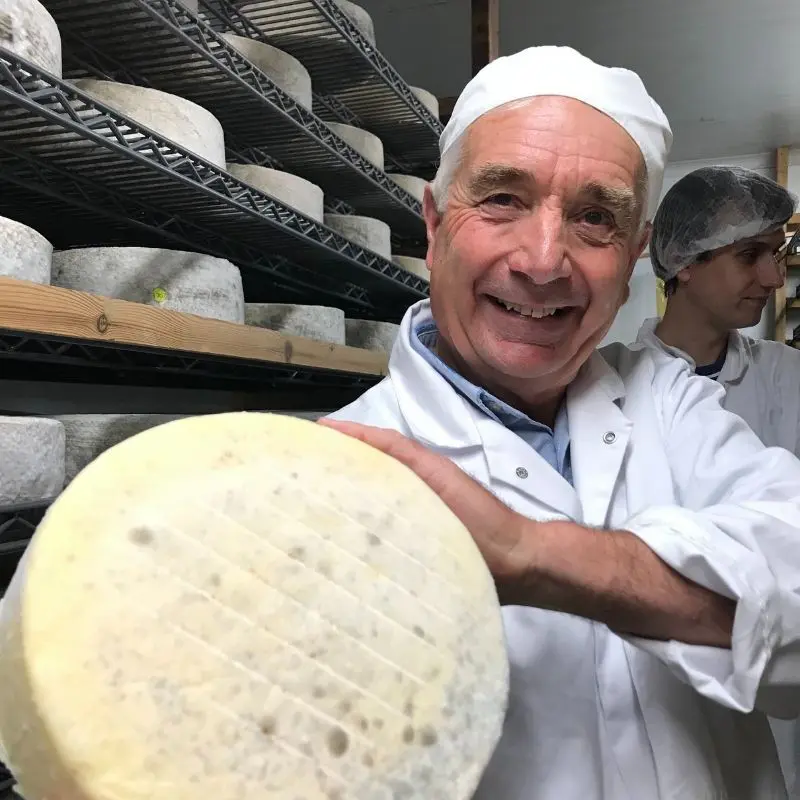
The Academy defines four Make classes:
Soft: this group includes fresh/unripened cheeses, as well as those intended for further ripening. Includes Brie de Meaux PDO and Mozzarella
Crumbly: this group includes hard crumbly cheeses, as well as some semi-hard cheeses intended for further ripening. Includes Lancashire and Blue Stilton PDO
Hard: this group includes hard and semi-hard cheese typically made by heating the curd to a specified temperature to remove moisture. Includes cheddar and Manchego PDO
Hard Cooked: the group includes hard and extra hard cheeses, typically heated to a high temperature to remove moisture. Includes Parmigiano-Reggiano and Le Gruyere AOP.
Post-Make Classes
Describing what happens AFTER the initial curd is made, the Post-Make categories are:
- Internal (Blue) Mould: The flavour of blue cheese arises from the Penicillium Roqueforti mould which grows through the paste of the cheese, includes Blue Stilton PDO and Gorgonzola PDO.
- External Mould / Yeast Ripened: Cheeses which are ripened by yeasts or moulds growing on their rind, includes Camembert & Baron Bigod.
- Washed Rind: Cheeses in this class are rubbed with a liquid, such as weak brine, to encourage the growth of sticky ripening bacteria on the rind, includes Morbier PDO & Stinking Bishop.
- Flavoured or Smoked: The flavour of cheese is modified by the addition of ingredients, because of being smoked, following maturation in brine, or as a result of the deliberate presence of mite. This group includes Smoked Cheddar and Mimolette.
- Wrapped, Rolled or Processed: Cheeses are either wrapped or coated or subject to physical manipulation, includes Livarot PDO and Cloth-bound Cheshire & Cheddar.
Most cheeses have at least one Post-Make, and many cheeses have more than one.
In addition to the Make Post-make model, the Academy has developed and continues to develop relationships with cheesemakers and suppliers around the world, allowing for the sharing of knowledge and expertise to cheese lovers and industry professionals alike.
In 2023, the Academy, in conjunction with Chiswick Cheese Market, launched a grant to support new cheesemakers, with the aim of bringing new cheeses to market. The grant provides
101 guide – Milk Production & Cheesemaking | Chapter five
How is Cheesemaking taught at Levels One, Two & Three?
All Levels of certification follow the Academy’s Make Post-make model as the basis for this module.

Level one – How cheese is made
At Level One, delegates will learn about the different cheese categories, using the Academy of Cheese MPM system: from Make – how the curd is made, and the Post-Make – what we can do with the curd after making it. They will have knowledge of and be able to describe the key ingredients and steps involved in cheesemaking.
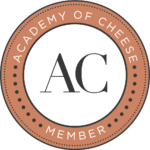
Level two – The components of cheesemaking
At Level Two, delegates take a closer look at the individual components of cheesemaking. As well as studying the different milking breeds, they will consider milk composition and how the species, seasons and lactation stages can impact the cheesemaking process and influence the finished cheeses. For example, whilst the Jersey cow is famed for its rich, high-fat content milk, it poses problems during the draining of the whey.
Moving onto the process of cheesemaking, delegates will delve deeper into the pros and cons of pasteurisation and other milk treatments, as well as the different types of starter cultures, rennets, bacterias and moulds and the role they play in cheesemaking and the finished product.
The MPM model is taken a step further at Level Two, looking at the science behind the Make and Post-make categories whilst subdividing each into Sub Makes and Sub Post-Makes. For instance, the sub Makes of Hard cheeses would be “cheeses that acidify in the VAT” and “cheeses that acidify in the mould”: an important distinction, effecting flavour, texture moisture, and microbial activity. Taking each sub Make and sub Post-Make category, the different approaches behind each are explored and analysed in depth at Level Two to see the effects they have on the final cheese.

Level three – Advanced knowledge and composition of milk
By this final level, the delegate with have an in-depth, practical knowledge of the cheesemaking process, with a thorough understanding of the measures of all ingredients of cheese and the ability to be able to make and mature a ripened cheese.
To support this, the qualities and composition of milk are studied at length: looking at the impact of different feeds, animal genetics, hygiene and protein to fat ratios and the effect they have on yield efficiency and cheese quality. This is expanded further by looking at the economics cheesemaking, including the effect of milk pricing, quality payment schemes and effective use of any by-products.
101 Guide Resources
Find all the articles, video, and resources you need to study this subject.
Milk Production & Cheesemaking videos
Milk Production & Cheesemaking resources
More subjects to explore.
Cheese, obviously! We are the Academy of Cheese after all. But, our mission is much greater than just a passion for cheese. Check out the pages below to see why we need to protect, support and promote cheese, its makers and mongers, how it’s possible and what we are doing to get there.
Share our passion? Share our mission!
Keep up to date with our progress. Subscribe to our blog!
Subscribe to our blogs
Get Academy mission updates delivered straight to your inbox. Subscribe to our blog and we’ll let you know what we are doing to protect, support and promote cheese, its makers and mongers as it happens.
